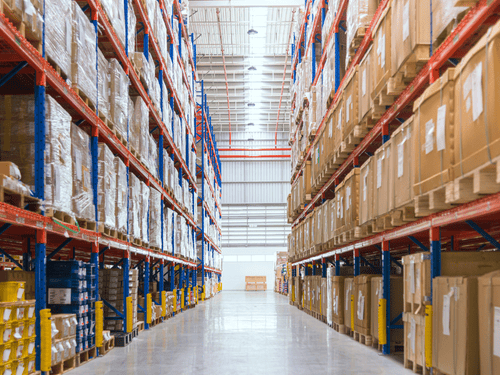As e-commerce continues to scale, efficient warehousing has become essential for cost control and customer satisfaction. With demand for faster delivery at lower costs, companies must optimize how and where they store products. Smart warehousing strategies are now central to overcoming last-mile delivery challenges.
The Last-Mile Challenge
Last-mile delivery represents one of the most expensive segments in the logistics chain. Delays and inefficiencies at this stage often stem from poor inventory placement and disorganized storage systems. A modern warehousing approach allows for better positioning of goods, minimizing travel time to the customer.
From Storage to Strategy
Warehousing is no longer just about storage—it’s a strategic tool for enhancing delivery performance. Businesses that prioritize warehouse location and layout reduce both distance and time during fulfillment. This directly lowers delivery costs while increasing order accuracy and speed.
Strategic Warehouse Placement Reduces Transit Distance
The Location Advantage

Where a warehouse is located significantly affects last-mile delivery outcomes. Facilities positioned near key customer zones reduce overall mileage and fuel costs. This shorter travel distance also lowers the risk of delays due to traffic congestion or weather disruptions.
Decentralized Warehousing for Speed
A decentralized warehousing model with multiple smaller hubs can be more effective than one central location. These satellite warehouses support regional fulfillment and speed up delivery across various service areas. Vareya helps businesses evaluate geographic data to choose optimal warehouse positions.
Cutting Costs with Smart Locations
Properly placed warehousing infrastructure minimizes transportation expenses and improves scalability. When peak seasons hit, businesses with strategic locations can handle volume without sacrificing delivery speed. This long-term benefit supports growth without inflating shipping costs.
Inventory Distribution Improves Delivery Speed
Storing Products Closer to Customers
Effective inventory distribution across multiple warehouses is a key cost-cutting tactic. By storing high-demand items closer to customers, fulfillment time is drastically reduced. This method also helps mitigate risks of stockouts or overstocks in specific areas.
The Role of Real-Time Data
Warehousing systems must be equipped with real-time data visibility to enable accurate inventory tracking. Without this, poor stock allocation can lead to delayed deliveries and emergency shipping fees. Centralized software solutions play a major role in balancing inventory loads across the network.
Planning for Regional Demand
For companies expanding nationally or globally, inventory planning becomes even more critical. Distributing products in alignment with regional demand allows for faster last-mile execution. Vareya supports this process by integrating warehousing data with fulfillment forecasting.
Technology-Driven Warehousing Enhances Accuracy
Faster and Smarter Fulfillment
Automation and technology are transforming how warehousing contributes to last-mile efficiency. With advanced picking systems and automated sortation, orders are processed faster and with greater precision. This minimizes re-deliveries, which are a hidden cost in the last-mile equation.
The Power of Automation
Robotic solutions and AI-powered inventory tools are reshaping the future of warehousing. These systems reduce labor dependency and allow for 24/7 operations without loss of accuracy. As a result, companies see improved throughput and lower unit costs.
Full Visibility and Control
Technology also enhances visibility into warehouse operations. Managers can monitor order flow, optimize layouts, and detect bottlenecks in real-time. This level of control strengthens every link in the fulfillment process, especially the final delivery stage.
Packaging Efficiency And Warehouse Layouts Save Time
Layout Impacts Cost

Packaging design and warehouse layout directly impact last-mile logistics costs. Poor layout planning often leads to longer picking times and unnecessary labor movements. Warehousing setups must be carefully optimized for streamlined workflows.
Small Changes, Big Savings
Standardizing packaging can reduce weight, dimensional charges, and space usage within delivery vehicles. Smaller packages also lead to more consolidated deliveries, further cutting last-mile transportation expenses. Warehousing teams that understand packaging dynamics can unlock major efficiencies.
Cross-Docking and Workflow Optimization
Cross-docking methods and zone picking further speed up order fulfillment. When orders flow smoothly from receipt to dispatch, last-mile services become more predictable and affordable. Vareya provides solutions to optimize layout and packaging practices within the warehousing stage.
Sustainability Goals Align With Last-Mile Cost Reduction
Lower Emissions, Lower Costs
Sustainable warehousing practices also contribute to lower delivery expenses. When routes are shorter and fulfillment is localized, emissions drop and fuel consumption decreases. This aligns with both environmental targets and operational savings.
Energy-Efficient Operations
Energy-efficient warehouses that reduce lighting, HVAC, and machinery costs create ripple effects across the supply chain. These savings can be reinvested in last-mile improvements such as eco-friendly delivery vehicles. Warehousing can support a company’s broader sustainability commitments.
Eco-Friendly and Efficient
Vareya encourages green warehousing by incorporating solar power, electric forklifts, and waste reduction protocols. These changes not only improve brand image but also lead to tangible reductions in total delivery cost. Forward-thinking warehousing strategies are both responsible and cost-effective.
Key Takeaways
Warehousing plays a critical role in reducing last-mile delivery costs by improving inventory placement, optimizing layout, and integrating technology. Strategic warehouse locations cut down transit time, while distributed inventory and automated systems boost speed and accuracy. With sustainability also in focus, modern warehousing supports long-term efficiency and aligns with business goals like reduced overhead and faster fulfillment.

